If you consider a virtual 11 lines staff 

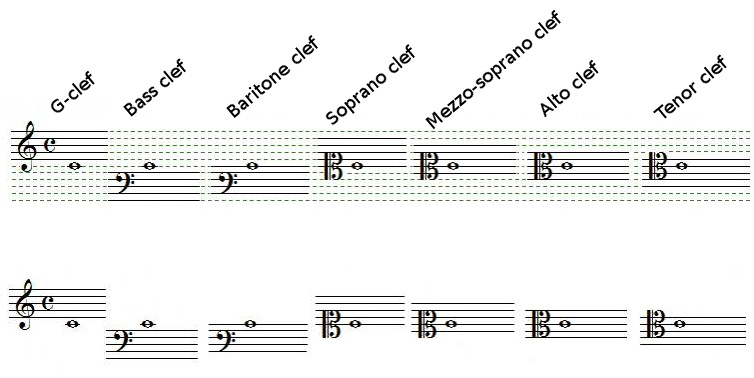
All notes on the example above are in fact the same note, the same pitch, these notes are sounding the same, they all are a C note.
But why so many clefs? There are three main explanations:
- Clefs can be used to avoid ledger lines because music notes with too much ledger lines are difficult to read for the musician:
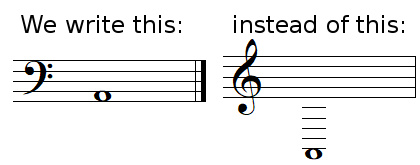
- As far as possible, the clefs correspond to the registers of instruments. For example, the viola use the alto clef:
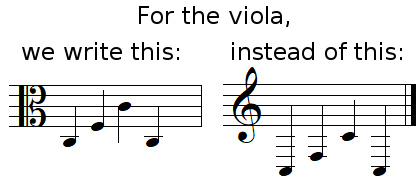
- Musical notation has often been dedicated to voice, and if there was only one clef, the treble clef for example, it would look like this with a 5 lines staff:

And with an 11 lines staff it wouldn't be much better:

So each voice had a different clef in the past:
| Soprano voice | Soprano clef | |
| Mezzo-soprano voice | Mezzo-soprano clef | |
| Alto voice | Alto clef | |
| Tenor voice | Tenor clef | |
| Baritone voice | Baritone clef | |
| Bass voice | Bass clef |
Like this:
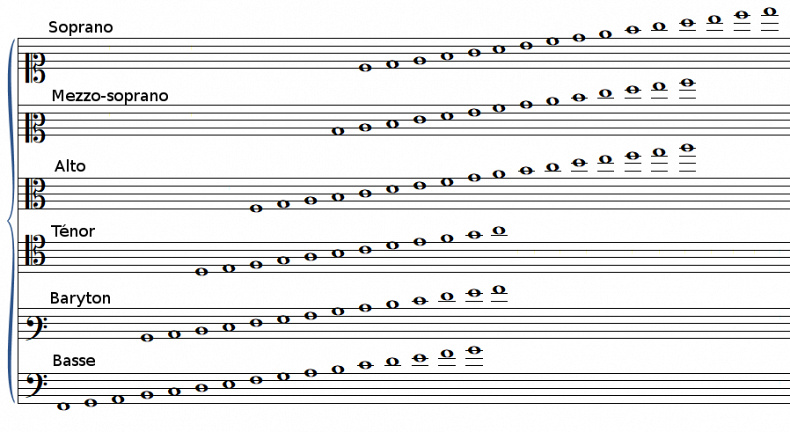
Nowadays, the use of clefs has been simplified:
| Soprano voice | Treble clef | |
| Mezzo-soprano voice | Treble clef | |
| Alto voice | Treble clef | |
| Tenor voice | Treble clef (performed one octave lower) | |
| Baritone voice | Bass clef | |
| Bass voice | Bass clef |
Relation between treble clef and bass clef
The relation between treble clef and bass clef is very simple: The C note below the staff in treble clef is the same music note that the C note above the staff in bass clef.

A special case about the horn players
There was a time when the bass clef was written an octave too low compared to modern notation, here is an example in Das Rheingold (The Rhinegold) by Richard Wagner with a horn solo performed by the eighth horn, specialist in very low pitched sounds:
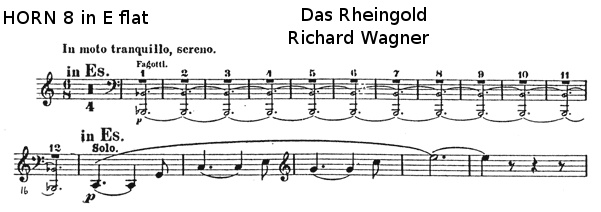
This musical sample from Richard Wagner's Das Rheingold prelude was recorded in 1959 by the Vienna Philharmonic conducted by Sir Georg Solti (source, CC BY-NC-ND 3.0 US license).
Here is what the horn player sees on his score, the horn score is in E flat, and he must transpose his score, but it is his job, everybody has problems in his life :

But the score in bass clef is written an octave too low, with modern notation the hornist should read this:

Which corresponds in concert pitch to this:

What an amazing instrument, isn't it?
External links :
1 - https://www.dolmetsch.com/musictheory1.htm
2 - https://www.dolmetsch.com/musictheory14.htm
3 - https://en.wikipedia.org/wiki/Clef










